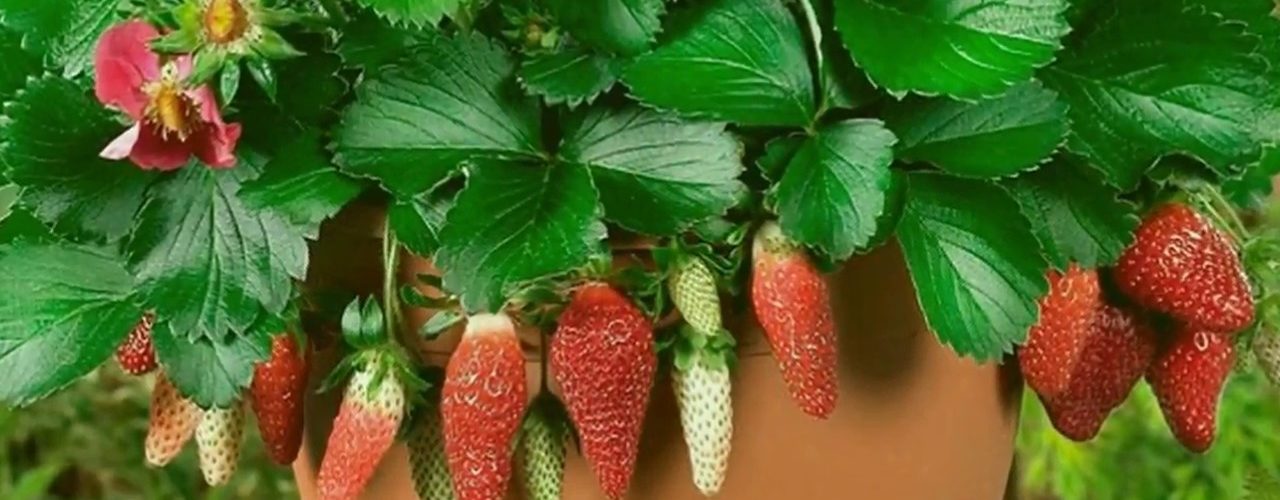There are several different methods for growing strawberry plants. There is always the traditional garden patch method when you want to know how to grow strawberry plants. You could of course grow strawberry plants in a raised bed, hydroponically, in pots or even in hanging baskets.
It is also very important to know that there are different types of strawberry plants. These different types have a bearing on exactly how you will grow your strawberry plants.
One type of strawberry plant is the “June” bearing. These strawberry plants will make a huge crop of berries, but only once per year in the late spring. These plants send out runners that will root and develop into rows. The first year of this type you will need to pluck all the blossoms from these strawberry plants. This firmly establishes their growth pattern and makes them ideal for a traditional strawberry patch planting.
The “ever bearing” type of strawberry plant will produce fruit twice a year; spring and autumn. You’ll want to pull all the blossoms from these strawberry plants their first year throughout the entire month of June. This will allow them to blossom again and then your strawberry plants will yield a full, fall harvest.
Another type of strawberry plant is the “day neutral”. You’ll have small, sweet berries from this type of plant for the entire season. Just like the other type of strawberry plants though, pluck off the initial blossoms for a grand, growing season.
If you are purchasing strawberry plants for transplanting from the nursery, do so in autumn for next years planting. Store them in your root cellar or basement. Keeping the roots covered with sand or wood shavings offers added protection.
Strawberry plants need a weed, tree or shrub free environment to thrive. Your sunny, garden area should also be in a spot where there haven’t been other plants before such as peppers, tomatoes or potatoes. These plants could have harbored a root disease such as verticillium wilt. This is a disaster and means certain death for strawberry plants.
The best growing situation when learning how to grow strawberry plants is to have a moist environment. Not to be confused with saturated ground in which they will not thrive. The soil for strawberry plants should be a good, rich organic matter. This will provide aeration and drainage as well as increase the moisture holding capacity of the ground.
The best kind of day for setting out your strawberry plants will be a cool and cloudy day. Carefully remove all damaged roots and trim any others to between four and five inches. Remove any of the flowers, old leaves or runners from plants. Put all of the plants that you’re transplanting into a container with a small amount of water in the bottom. Keep them nearby, but out of direct sun.
You need to place the plants in a wide hole, deep enough to cover the roots sufficiently. But remember to leave about half of the short stem exposed. When placing the roots in the ground fan them out and then firm the dirt up around each plant. Give it a good amount of water when you transplant it.
How to grow strawberry plants largely depends on the type of plant you’ve chosen.
Day neutral strawberry plants and ever bearing plants need to be planted in individual hills. This type of plant can work well for potting plants or hanging baskets. You can plant June bearing plants in hills or in a row system. Whether you choose rows or hills for planting be sure to plant either at least two feet apart to make weeding or walking through easier.
Water your strawberry plants as soon as they are transplanted. They will continue to need at least one inch of water per week, you should water this much if there isn’t this amount of rainfall in your area.
Hand weeding strawberry plants is the best choice to keep from damaging them with a hoe or other garden tool.
Mulching strawberry plants is always a good idea because it can keep the temperature of the plants equalized.
Strawberry plants are easy to maintain and provide a fabulous crop for fresh eating or putting in the freezer to enjoy year round.
Related Posts



